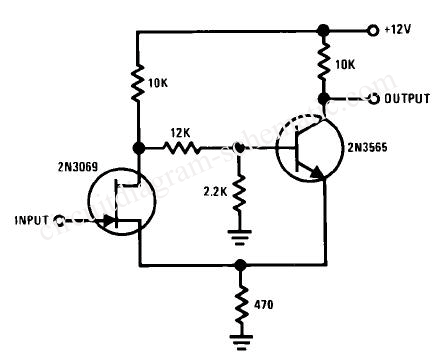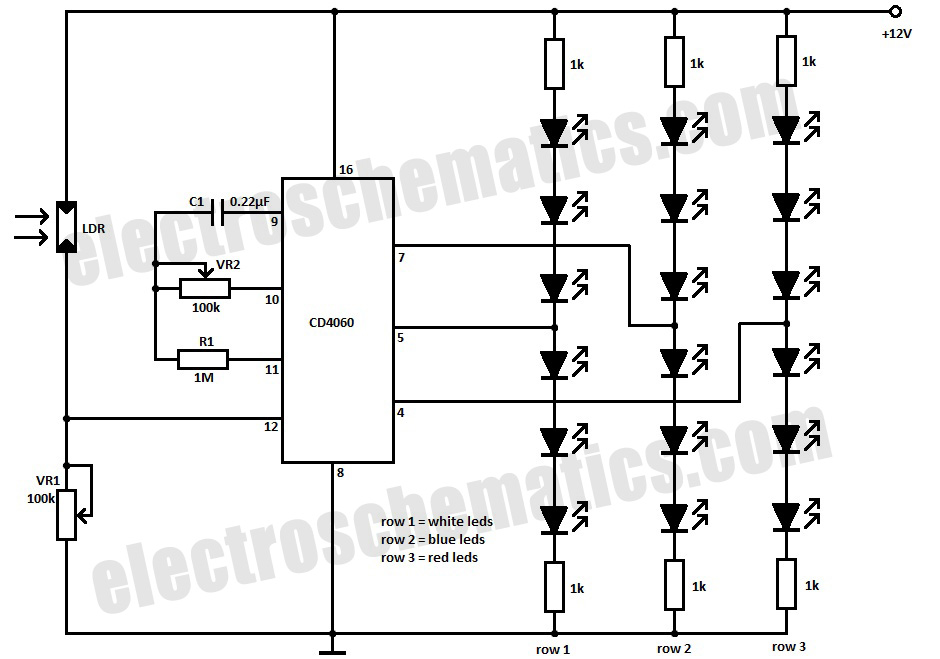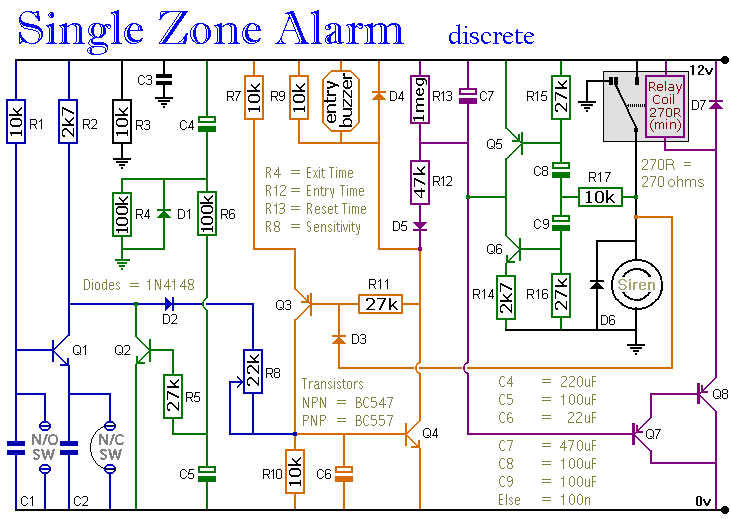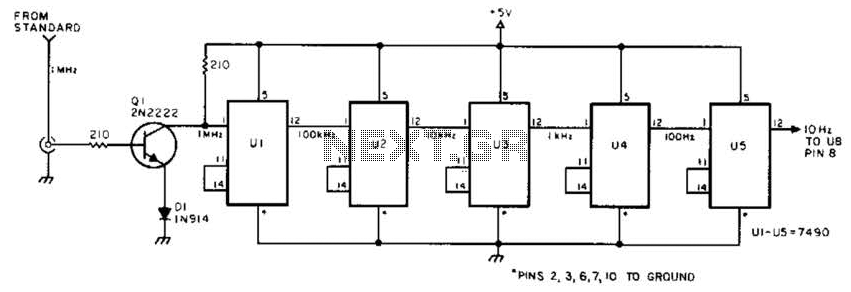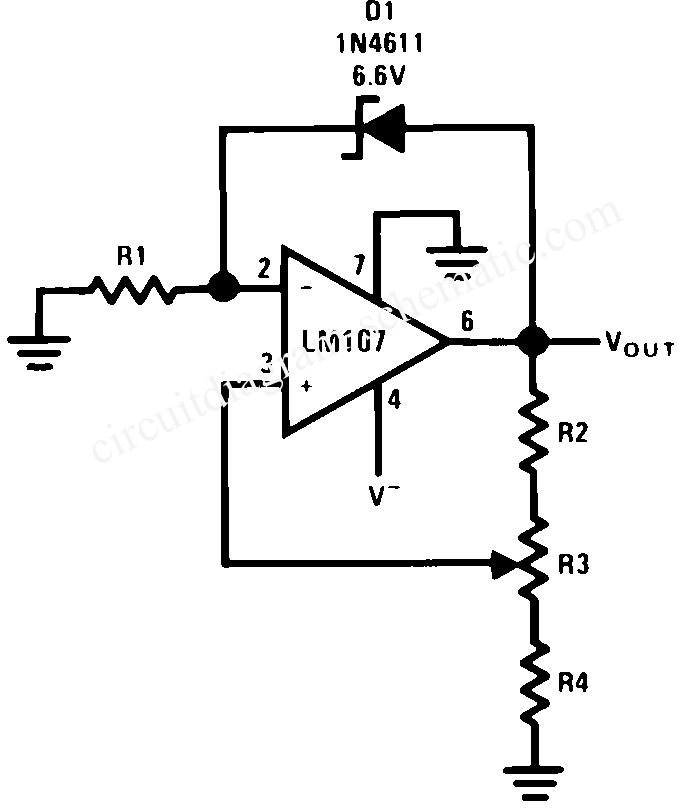
mini fm transmitter circuit
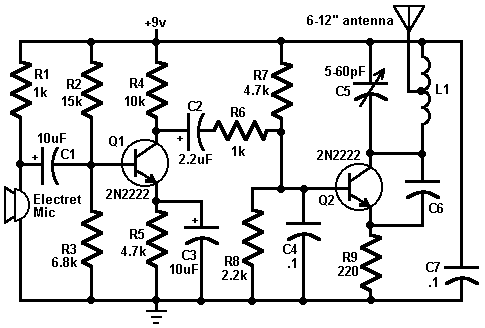
This circuit is a simple two-transistor (2N2222) mini FM transmitter. No authorization is required for this transmitter according to FCC regulations regarding wireless microphones. When powered by a 9-volt battery and equipped with an antenna no longer than 12 inches, the mini FM transmitter will comply with FCC limits. The microphone is amplified by Q1, Q2, C5, and L1, which form an oscillator operating in the 80 to 130 MHz range. The oscillator is voltage-controlled, modulated by the audio signal connected to the base of Q2. R6 limits the input to the RF section, and its value can be adjusted as necessary to control the input level. L1 and C6 can be constructed using wire and a pencil. The inductor (L1) is made by winding two pieces of 24-gauge enamel wire side by side around a pencil six times. After removing the wire from the pencil, separate the two coils. One of these coils (the larger one) will be used in the tank circuit, and the other can be used for a subsequent project. The antenna for the mini FM transmitter (24-gauge wire) should be soldered to the coil approximately two turns from the bottom, on the transistor side, and should measure 8-12 inches in length. To create C6, take a 4-inch piece of 24-gauge insulated wire, bend it over double, and starting 1/2 inch from the open end, twist the wire as if forming a rope. When about 1 inch of twisted wire is achieved, stop and cut the looped end off, leaving about 1/2 inch of twisted wire (which forms the capacitor) and 1/2 inch of untwisted wire for leads.
This mini FM transmitter circuit utilizes two 2N2222 transistors as the active components for amplification and oscillator functionality. The transmitter operates within the FM band, specifically between 80 MHz and 130 MHz, making it suitable for short-range audio transmission. The voltage-controlled oscillator (VCO) is crucial for modulating the frequency based on the audio input. The audio signal is fed into the base of the second transistor (Q2), which modulates the oscillator frequency, allowing the transmitted signal to carry the audio information.
The inductor (L1) and capacitor (C6) form a resonant tank circuit that determines the operating frequency of the oscillator. The design encourages the use of simple materials, such as 24-gauge enamel wire, for constructing the inductor, which is wound around a pencil to achieve the desired inductance. The construction technique emphasizes ease of assembly and accessibility for hobbyists.
The antenna is also a critical component, as it facilitates the radiation of the RF signal. The specified length of 8-12 inches is essential for ensuring that the antenna is resonant at the operating frequency, thus enhancing transmission efficiency. The careful design of the circuit, including the adjustable resistor R6, allows for fine-tuning of the input signal level, ensuring optimal performance.
Overall, this mini FM transmitter circuit exemplifies a straightforward yet effective design for short-range audio transmission, adhering to regulatory standards while remaining accessible for experimentation and learning in electronics.This ambit is a simple two transistor (2N2222) mini FM transmitter. No authorization is appropriate for this transmitter according to FCC regulations apropos wireless microphones. If powered by a 9 volt array and acclimated with an antenna no best than 12 inches, the mini fm transmitter will be aural the FCC limits.
The microphone is amplified by Q1. Q2, C5, and L1 anatomy an oscillator that operates in the 80 to 130 MHz range. The oscillator is voltage controlled, so it is articulate by the audio arresting that is activated to the abject of Q2. R6 banned the ascribe to the RF section, and it`s amount can be adapted as all-important to absolute the aggregate of the input.
L1 and C6 can be fabricated with wire and a pencil. The inductor (L1) is fabricated by ambagious two pieces of 24 barometer cloistral wire, laid ancillary by side, about a pencil six times. Remove the braid you accept formed and alleviate the two coils afar from anniversary other. One of these coils (the bigger attractive of the two) will be acclimated in the catchbasin circuit, and the added can be acclimated in the abutting one you build.
The antenna for mini fm transmitter (24 gauge wire) should be soldered to the coil you made, about 2 turns up from the bottom, on the transistor side, and should be 8-12 inches long. To make C6, take a 4 inch piece of 24 gauge insulated wire, bend it over double and, beginning 1/2 ³ from the open end, twist the wire as if you were forming a rope.
When you have about 1 ³ of twisted wire, stop and cut the looped end off, leaving about 1/2 ³ of twisted wire (this forms the capacitor) and 1/2 ³ of untwisted wire for leads. 🔗 External reference
This mini FM transmitter circuit utilizes two 2N2222 transistors as the active components for amplification and oscillator functionality. The transmitter operates within the FM band, specifically between 80 MHz and 130 MHz, making it suitable for short-range audio transmission. The voltage-controlled oscillator (VCO) is crucial for modulating the frequency based on the audio input. The audio signal is fed into the base of the second transistor (Q2), which modulates the oscillator frequency, allowing the transmitted signal to carry the audio information.
The inductor (L1) and capacitor (C6) form a resonant tank circuit that determines the operating frequency of the oscillator. The design encourages the use of simple materials, such as 24-gauge enamel wire, for constructing the inductor, which is wound around a pencil to achieve the desired inductance. The construction technique emphasizes ease of assembly and accessibility for hobbyists.
The antenna is also a critical component, as it facilitates the radiation of the RF signal. The specified length of 8-12 inches is essential for ensuring that the antenna is resonant at the operating frequency, thus enhancing transmission efficiency. The careful design of the circuit, including the adjustable resistor R6, allows for fine-tuning of the input signal level, ensuring optimal performance.
Overall, this mini FM transmitter circuit exemplifies a straightforward yet effective design for short-range audio transmission, adhering to regulatory standards while remaining accessible for experimentation and learning in electronics.This ambit is a simple two transistor (2N2222) mini FM transmitter. No authorization is appropriate for this transmitter according to FCC regulations apropos wireless microphones. If powered by a 9 volt array and acclimated with an antenna no best than 12 inches, the mini fm transmitter will be aural the FCC limits.
The microphone is amplified by Q1. Q2, C5, and L1 anatomy an oscillator that operates in the 80 to 130 MHz range. The oscillator is voltage controlled, so it is articulate by the audio arresting that is activated to the abject of Q2. R6 banned the ascribe to the RF section, and it`s amount can be adapted as all-important to absolute the aggregate of the input.
L1 and C6 can be fabricated with wire and a pencil. The inductor (L1) is fabricated by ambagious two pieces of 24 barometer cloistral wire, laid ancillary by side, about a pencil six times. Remove the braid you accept formed and alleviate the two coils afar from anniversary other. One of these coils (the bigger attractive of the two) will be acclimated in the catchbasin circuit, and the added can be acclimated in the abutting one you build.
The antenna for mini fm transmitter (24 gauge wire) should be soldered to the coil you made, about 2 turns up from the bottom, on the transistor side, and should be 8-12 inches long. To make C6, take a 4 inch piece of 24 gauge insulated wire, bend it over double and, beginning 1/2 ³ from the open end, twist the wire as if you were forming a rope.
When you have about 1 ³ of twisted wire, stop and cut the looped end off, leaving about 1/2 ³ of twisted wire (this forms the capacitor) and 1/2 ³ of untwisted wire for leads. 🔗 External reference
